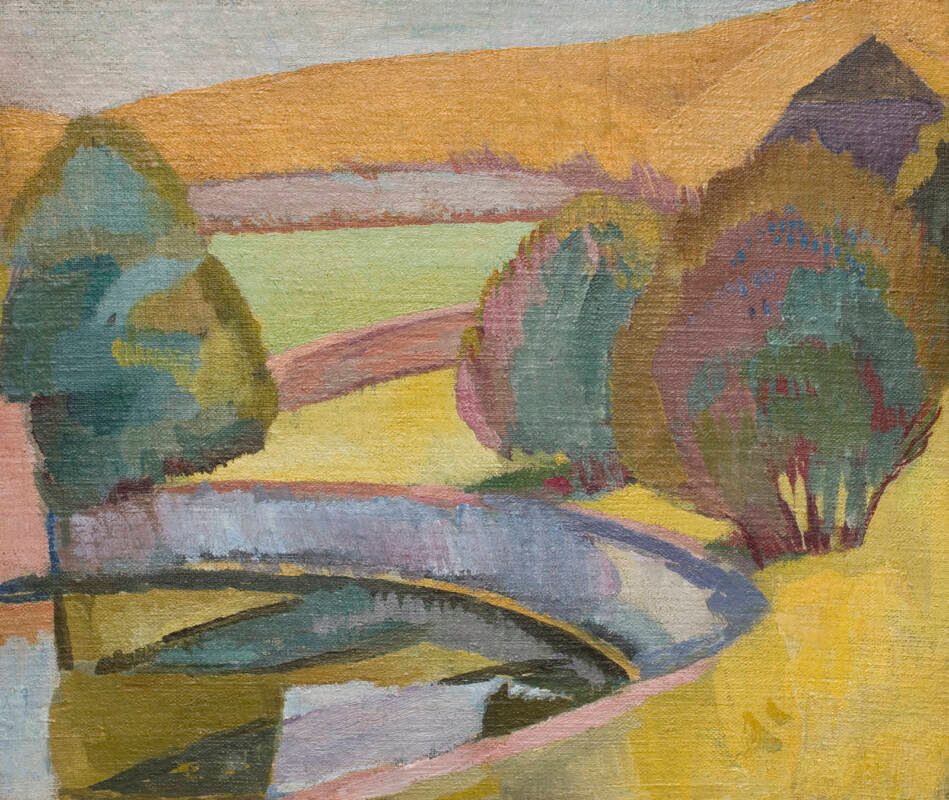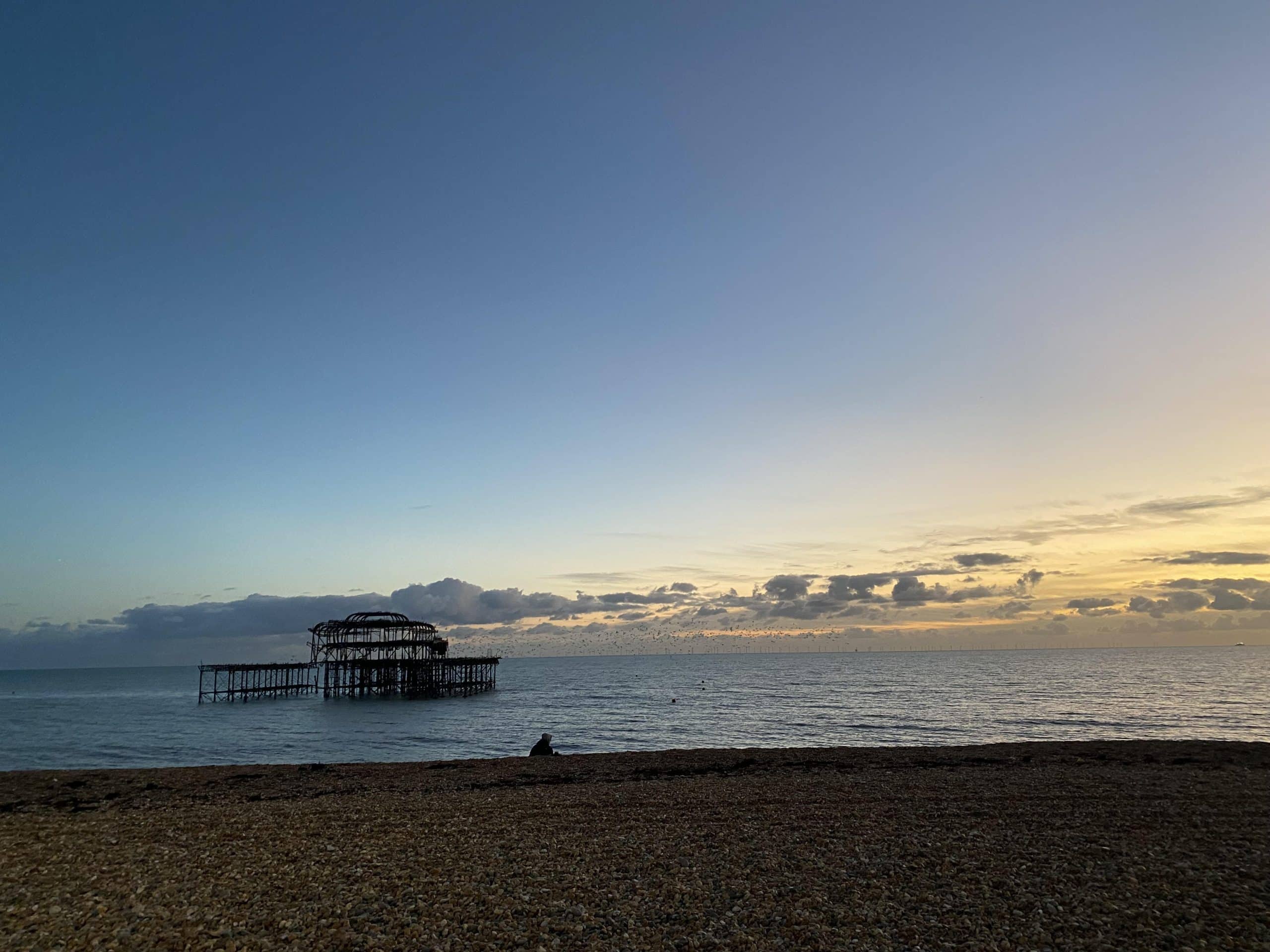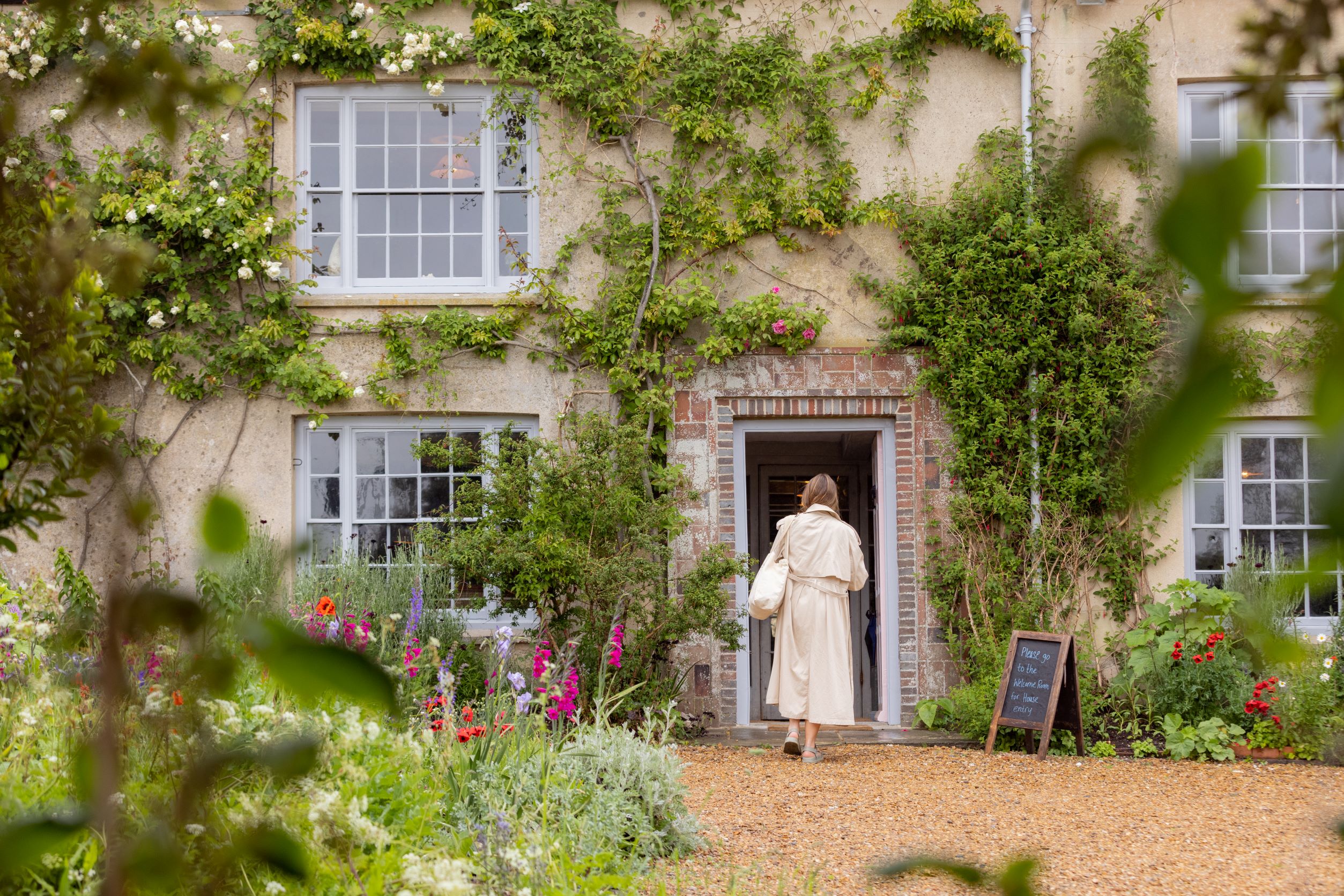
Newlands House Gallery
Art
Newlands House is a new gallery inspired by the historic associations of Petworth and Sussex with great artists, writers, and designers from times past.

Pallant House Gallery selects five works of art depicting stunning Sussex landscapes you can still visit today.
From its rolling green hills to its chalk white coasts, Sussex is a region blessed with a varied and beautiful landscape. Over the centuries these views have inspired generations of artists, whose work, in turn, has inspired Pallant House Gallery’s current exhibition: Sussex Landscape: Chalk, Wood and Water. From some of our greatest landscape artists like Constable and Turner to contemporary artists working in the area today, the curation shows Sussex as a place of creativity, exploration, retreat and alternative lifestyles. In celebration of the exhibition, staff at Pallant House have selected five works depicting extraordinary places you can still visit today. See them up close in Chichester until 23 Aril 2023.
Photographer, model, muse, war correspondent and nurse, Lee Miller is one of the most fascinating female icons of the 20th century. In 1929 she moved to Paris where she became the muse, lover and apprentice of the celebrated photographer, Man Ray. Together they created new photography techniques and Miller’s Surrealist ideas flourished. During the Second World War, Miller accompanied US troops and photographed what she saw, including the liberation of Bergen Belsen. In 1937 Miller met and fell in love with fellow surrealist artist Roland Penrose. Together they bought Farleys House near Lewes, East Sussex in 1949. The house became the site of meetings between some of the leading figures of the international avant-garde, including Pablo Picasso, Max Ernst and Leonora Carrington.
This photograph taken by Miller shows a view of the South Downs in the distance, farmland punctuated by hay bales, and a walled garden to the left. Miller and Penrose collected works by their contemporaries, which they displayed in the house and garden. A sculpture by Henry Moore, Mother and Child (1936), stands in the foreground of the photograph.
In real life: Farleys House is now a gallery and home to the Lee Miller archive.

Lee Miller [1907-1977), View from Farleys House, Muddles Green, Sussex, England, c.1951, C-type digital print from original print or negative, Lee Miller Archives, East Sussex, England.

Farleys exterior square. Courtesy Farleys House and Gallery
Ravilious was a British printmaker, watercolourist, designer, book illustrator and an official war artist during WWII. He grew up in Sussex and is best known for his modernist depictions of the South Downs and the English pastoral landscape. As a war artist, he toured military bases to produce his work. Ravilious sadly became the first war artist to die in active service when the plane he was on went missing off Iceland in 1942.
In 1929, Ravilious produced an almanack of the twelve months for the Lanston Monotype Corporation. For the month of May, he chose to depict the Long Man of Wilmington near Polegate, a mysterious and probably ancient figure carved into the hillside. This subject was popular with artists during this period and it would be a subject that Ravilious would return to in watercolour in 1939. Alongside the Long Man of Wilmington, Ravilious has chosen to depict the zodiac sign for the month of May, the bull which represents the star sign Taurus.
This work is on loan from Towner Eastbourne where you can see many more examples of Ravilious’s work.
In real life: Meet The Long Man of Wilmington at Windover Hill near Wilmington, via the public footpath that leads across the fields to the giant’s feet.

Eric Ravilious, The Long Man of Wilmington (Taurus: Illustration for May, from the Almanack 1929), 1925, Wood engraving on paper, Towner Eastbourne.

Long Man of Wilmington. Photo: Daniel Alford
The Bloomsbury Group were a group of artists, writers and intellectuals who shared similar bohemian ideals. From 1916, two of these artists, Vanessa Bell and Duncan Grant, moved to Charleston near Firle. This dilapidated and remote farmhouse was without electricity, a telephone, or a water heater. Vanessa’s sister, the writer Virginia Woolfe, was also part of the group and lived nearby. Duncan Grant was a conscientious objector and refused to be conscripted into the British army during the First World War. Instead, he and his lover David Garnett contributed to the war effort by working on the agricultural land of the South Downs.
Charleston provided a haven for Grant and Bell, and their friends and lovers. The remote location of the farmhouse and their privileged upbringing and affluent backgrounds allowed the Bloomsbury Group to pursue a freedom and sexual liberty unimaginable to most people at the time. The house overlooks a large pond that was painted by Grant and Bell on several occasions. It was on this pond that Grant once considered breeding flamingos.
This work is on loan from the Charleston Trust.
In real life: Visit Charleston and experience the interiors created by Bell and Grant, plus a year-round programme of exhibitions and events. The garden and grounds are free to visit all year round.

Vanessa Bell, The Pond at Charleston, East Sussex (1916) Oil on canvas, Charleston, Estate of Vanessa Bell. All rights reserved, DACS 2022

The pond at Charleston. Photo: Will Hearle
Best known for his murals, Frank Brangwyn was a Welsh painter, designer, printmaker, draughtsman and much more. He turned his hand to many different mediums and it is estimated that he produced over 12000 works, including murals, paintings, ceramics, stained glass windows, wood engravings and furniture. Brangwyn received some training from his architect father and was apprenticed to William Morris, but taught himself many of his artistic skills. One of his most famous commissions is a series of murals representing the British Empire for the House of Lords.
During the First World War, Frank Brangwyn and his wife Lucy moved to Ditchling to escape London. They bought a historic house called The Jointure, which had been given to Anne of Cleves following her divorce from Henry VIII in 1540. The Brangwyns moved back to London in 1920 but following Lucy’s death in 1924, Frank moved to Ditchling permanently.
In this painting, nature breaches the boundary between inside and outside. Autumn leaves from an oak tree have been brought inside and displayed in a silver tankard, whilst green leaves, possibly from a climbing passionflower can be seen just beyond the window ledge.
In real life: Explore the village of Ditchling, which became a magnet for artists in the 20th century. You can find out about its rich history at the Ditchling Museum of Art + Craft.

Frank Brangwyn ‘From My Window at Ditchling’, c.1925, Oil on board, Jerwood Collection.

The village of Ditchling. Photo: Daniel Alford.
Over his seventy-year career, Dennis Creffield continuously reinvented his style. His artistic journey began at 16 in classes with artist David Bomberg at Borough Polytechnic. His classmates, Frank Auerbach and Leon Kossoff, were also to become renowned artists and were all part of the Borough group. His work was heavily influenced by Bomberg, but also Cézanne, Turner and William Blake.
In 1987 Creffield embarked on one of his most famous projects – his dramatic drawings of all of England’s twenty-six medieval cathedrals. He completed the project in six months, each time arriving in the early morning in his campervan to avoid the curious public.
Creffield moved several times, from London to Leeds and finally to Brighton in 1968 where he spent the rest of his life. He became ‘enraptured by the light and movement’ of the coastal city and he painted the beach, the pier, and the promenade a number of times.
Dennis Creffield’s ‘Brighton Beach, East Sussex’ is on loan from Brighton & Hove Museums, which hold a fantastic collection spanning the ancient world to the modern day.
In real life: Brighton Beach is open to the public all year round.

Dennis Creffield, Brighton Beach, East Sussex, c. 1975, Oil on canvas, Brighton & Hove Museums, © The Estate of Dennis Creffield

Brighton Beach.
You can see all of these works at Pallant House Gallery, Chichester in their current exhibition, Sussex Landscape: Chalk, Wood and Water until April 23, 2023.

Art
Newlands House is a new gallery inspired by the historic associations of Petworth and Sussex with great artists, writers, and designers from times past.

Story | Art | Landscape | Wine
Just over one hundred years ago a group of artists, writers and intellectuals changed how we think of a special corner of Sussex – and a lot else besides.

Wine | Overnight | Accommodation | Landscape
The vineyard vacay is on the rise. A growing number of Sussex vineyards also offer overnight accommodation for guests who’d prefer to linger on, in a range of accommodation styles ranging from tipis to luxurious lodges and even a hobbit house.

Art
The modernist home and studio of the painters Vanessa Bell and Duncan Grant, Charleston was a gathering point for some of the 20th century’s most radical artists, writers and thinkers known collectively as the Bloomsbury group.

Art
Visit the extraordinary Sussex home of photographer Lee Miller and Surrealist artist Roland Penrose, whose guests included Picasso, Man Ray and Miró.

Landscape
Britain’s tallest chalk hill figure. There is no firm evidence about who he is, or why he is there. The figure is cut into the steep slopes of Windover Hill, and is 235 feet high.